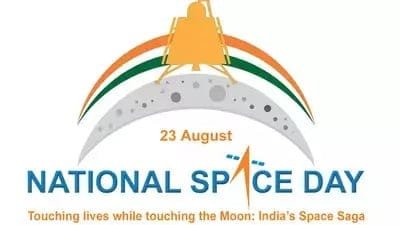Historical Significance of Chandrayaan-3 Mission
The Chandrayaan-3 mission marked a monumental achievement in India’s space exploration endeavors, with its successful moon landing on August 23, 2023. This accomplishment elevated India to an elite group of nations, as the fourth country to set foot on the lunar surface, following the United States, the Soviet Union, and China. Moreover, Chandrayaan-3 achieved the unprecedented milestone of being the first mission to reach the moon’s southern polar region, a locale of immense scientific interest due to its potential for ice water deposits and its relatively unexplored terrain.
Launched by the Indian Space Research Organization (ISRO), Chandrayaan-3 was a testament to India’s growing capabilities in space technology. The mission focused on several core objectives, including detailed geological studies, identifying the distribution of water/ice, and analyzing the moon’s mineral composition. The sophisticated payload aboard the rover allowed for unprecedented mapping and data collection, providing valuable insights into the moon’s environment and composition.
The mission was not without its challenges. One of the critical technological feats was the precision landing in the difficult terrain of the lunar south pole. The team overcame significant technical and environmental challenges to ensure the mission’s success, including the development of advanced communication systems and sophisticated navigation technologies. The landing mechanism was enhanced to avoid the pitfalls that had hindered previous attempts, making Chandrayaan-3 a beacon of resilience and innovation.
The Chandrayaan-3 mission was launched within a broader context of international cooperation and technological advancements. ISRO collaborated with various international space agencies, leveraging global expertise and resources. This collaboration extended from data sharing to the development of cutting-edge instruments that enriched the mission’s scientific output. Furthermore, the mission exemplified the benefits of investing in homegrown technological research and development, showcasing India’s significant progress in aerospace engineering and science.
As India commemorates its first National Space Day, the historical significance of the Chandrayaan-3 mission takes center stage, symbolizing a new era in lunar exploration and placing the nation firmly on the international space exploration map.
Instituting National Space Day: A Vision of Progress
In a landmark announcement, Hon’ble Prime Minister Shri Narendra Modi declared August 23 as ‘National Space Day’, commemorating the successful moon landing of Chandrayaan-3. This day has been established not just as a celebration of scientific achievement, but as a beacon of India’s aspirations in space exploration and technological advancement. The mission’s success serves as a testament to the nation’s increasing capabilities in space science and a reflection of its commitment to bolstering a technically proficient future.
National Space Day is designed to serve several pivotal purposes. Firstly, it aims to spark inspiration among future generations, highlighting the thrilling prospects of space missions and encouraging young minds to dream beyond our planet. By celebrating this day annually, the government hopes to instill a sense of wonder and possibility, bound by the overarching theme of exploration and discovery.
Furthermore, this declaration recognizes the tireless efforts and invaluable contributions of scientists, engineers, and technologists who were instrumental in the Chandrayaan-3 mission. These individuals have dedicated countless hours and expertise, paving the way for India to make significant strides on the global space stage. National Space Day serves as an official acknowledgment of their hard work, fostering a culture that values and celebrates scientific contributions.
In addition to fostering national pride, instituting National Space Day emphasizes the importance of Science, Technology, Engineering, and Mathematics (STEM) education. By drawing attention to the successes of space missions, the initiative seeks to motivate educational institutions and students to prioritize STEM fields, thereby fortifying the nation’s future scientific workforce. This focus is crucial in a world where technological advancements are rapidly transforming everyday life, making proficiency in these fields a key to national progress and global competitiveness.
The symbolic value of celebrating Chandrayaan-3’s milestone goes beyond mere nostalgia; it embodies India’s vision for progress. The moon landing stands as an inspiring achievement that showcases the potential of what concerted effort, advanced planning, and cutting-edge science can achieve. National Space Day thus becomes more than a mere annual event—it is a vision that aligns with India’s larger goals of space exploration, technological development, and inspiring future generations to reach for the stars.
Highlights of the Celebratory Events
In the lead-up to the grand celebration on August 23, 2024, a series of engaging events and activities have been meticulously planned across India to commemorate the historic occasion of Chandrayaan-3’s successful moon landing. These events are designed to educate, inspire, and unite people from all walks of life under the umbrella of India’s remarkable achievements in space exploration.
Educational programs will be a cornerstone of the celebrations, featuring a diverse array of public lectures, seminars, and workshops. Leading educational institutions and research centers will host these sessions to facilitate conversations on various aspects of space science. Notable speakers from the scientific community, including eminent astronomers, astronauts, and policymakers, will provide valuable insights into India’s space missions and the future trajectory of space exploration.
In addition to the educational aspect, the celebrations will include public exhibitions showcasing detailed models of space missions, including Chandrayaan-3. These exhibitions will be open to the general public and are expected to draw significant attention due to their interactive and immersive nature. Among the crowd-pleasing features will be virtual reality experiences that will allow participants to simulate lunar landings and explore the moon’s surface, captivating the imagination of both young and old.
Hands-on science activities, organized in collaboration with schools and science clubs, aim to spark curiosity and enthusiasm for space exploration among the youth. These activities will incorporate basic principles of astronomy and space technology, allowing students to build small models of rockets, design space mission plans, and participate in space-themed quizzes and competitions.
Furthermore, several towns and cities will host special events where children and families can engage with mobile planetariums and sky observation sessions led by experts. These sessions will be conducted in a festive atmosphere to ensure widespread community participation. The collective aim of these initiatives is not only to celebrate India’s achievements but also to foster a deeper public interest in space science and exploration, nurturing the next generation of Indian space enthusiasts and scientists.
The Main Event in New Delhi and Its Societal Impact
India’s first National Space Day will be a momentous occasion, commemorated with a grand celebration in New Delhi on August 23, 2024. The event will feature an array of activities designed to honor the milestone of Chandrayaan-3’s successful moon landing and to highlight the nation’s continuous advancement in space technology. The agenda for the day is packed with keynote speeches from leading scientists and policymakers, each sharing insights on the significance of this achievement and the future direction of India’s space program.
Awards ceremonies will recognize the contributions of key figures in the Indian Space Research Organization (ISRO) and other stakeholders who have played pivotal roles in the success of the Chandrayaan missions. Special presentations will showcase the journey of Chandrayaan-3, from its inception to its historic landing, providing attendees with a comprehensive understanding of the technical challenges and triumphs encountered along the way.
The celebrations in New Delhi are not just about honoring past achievements; they aim to highlight the broader societal impact of space technology. Satellite applications have significantly improved various sectors in India, bringing transformative changes to agriculture, disaster management, and communication. For instance, precision farming enabled by satellite imagery has optimized crop yields and resource use, while early warning systems have enhanced disaster preparedness and response, saving countless lives.
The event will also emphasize the potential for citizens to engage with the Indian space program. Interactive exhibits and workshops will offer attendees opportunities to learn about current projects and how they can contribute to future endeavors. By fostering a spirit of participation and innovation, National Space Day seeks to inspire the next generation of scientists, engineers, and space enthusiasts.
Through these celebrations and engagements, India’s National Space Day is set to not only honor a landmark event but also to underline the pivotal role of space technology in enhancing life on Earth, while inspiring collective ambition towards future space exploration.























